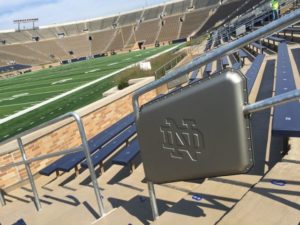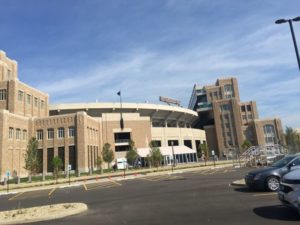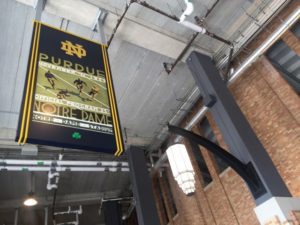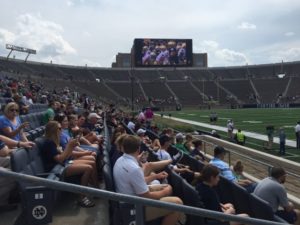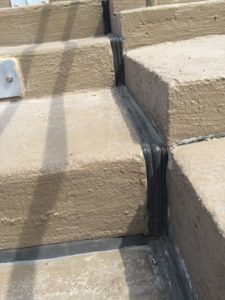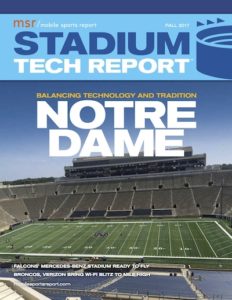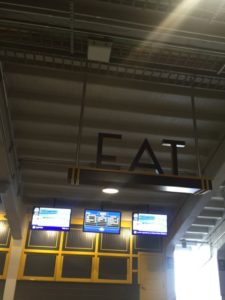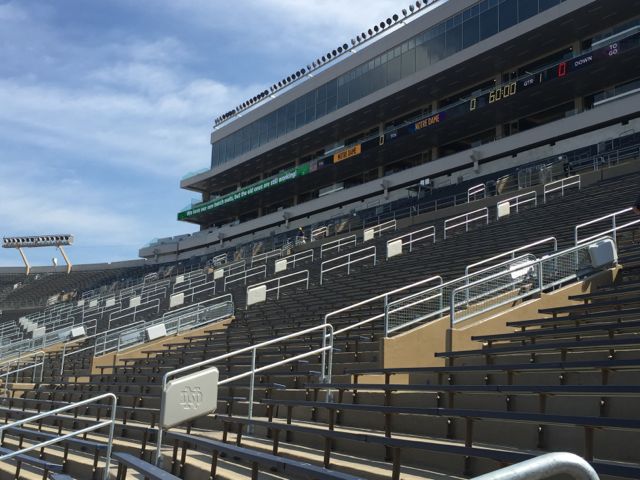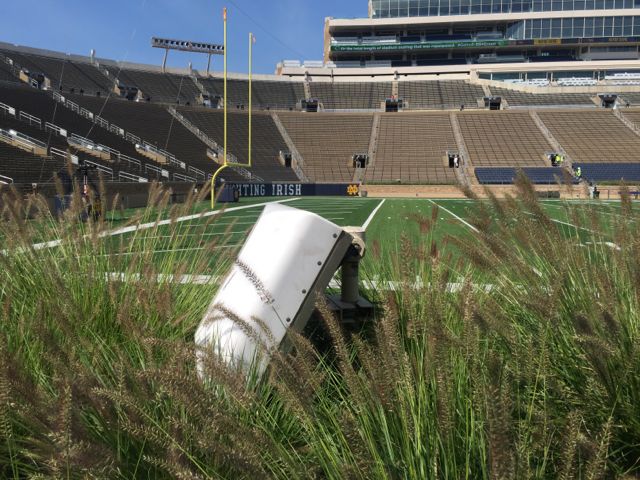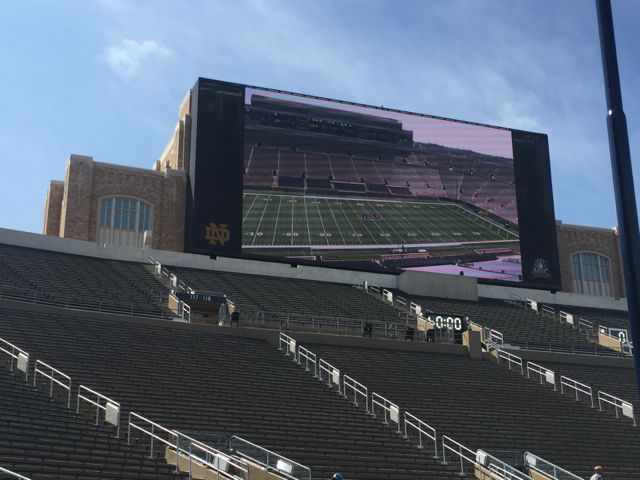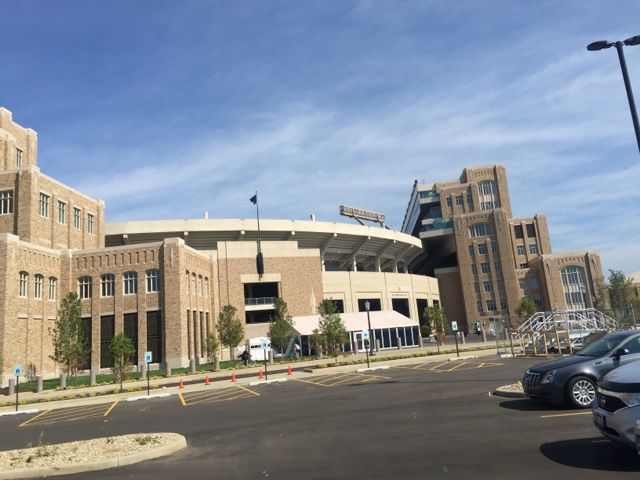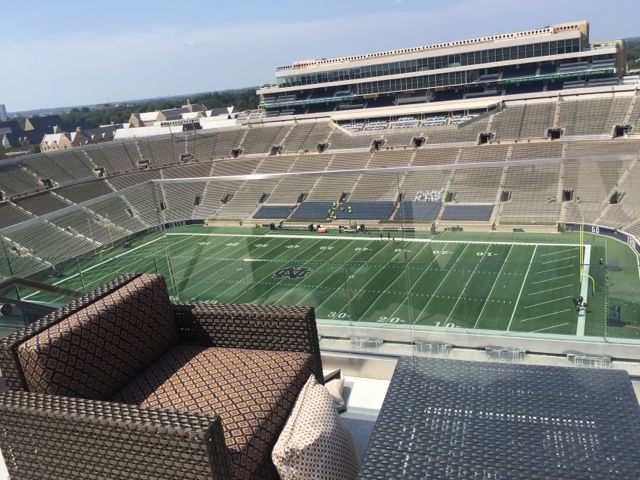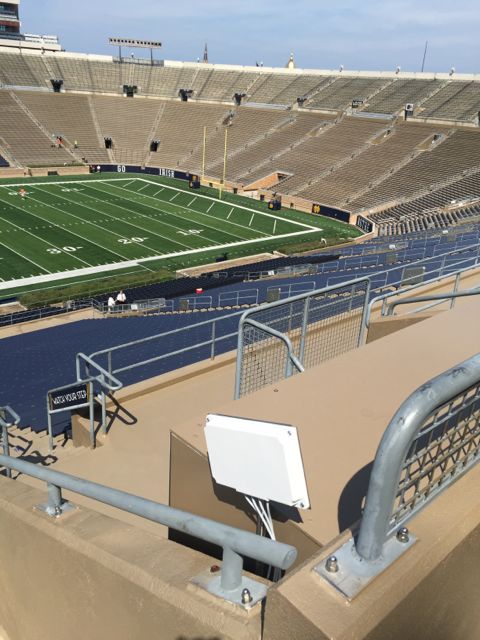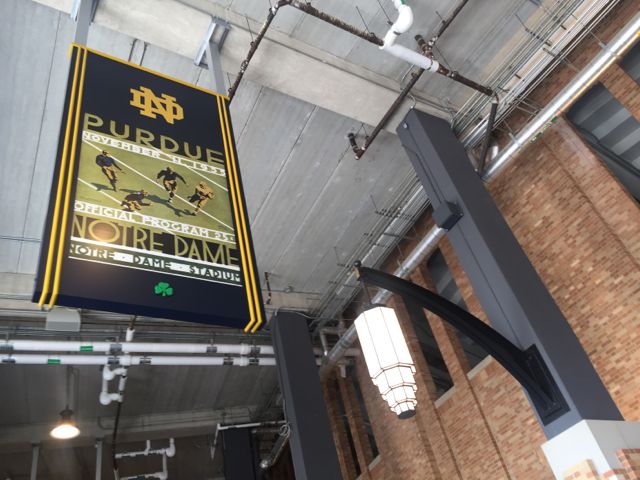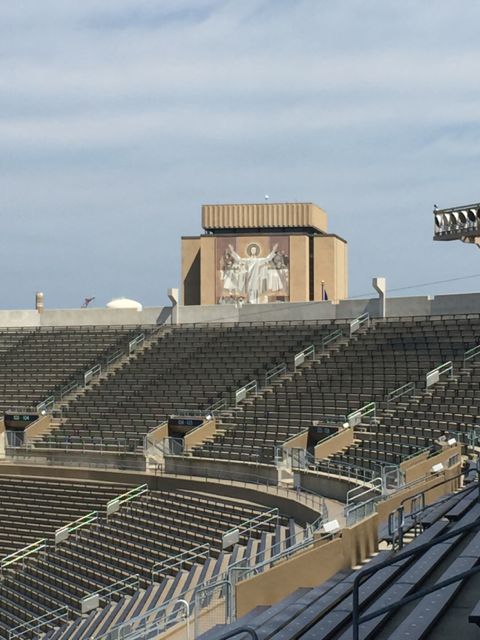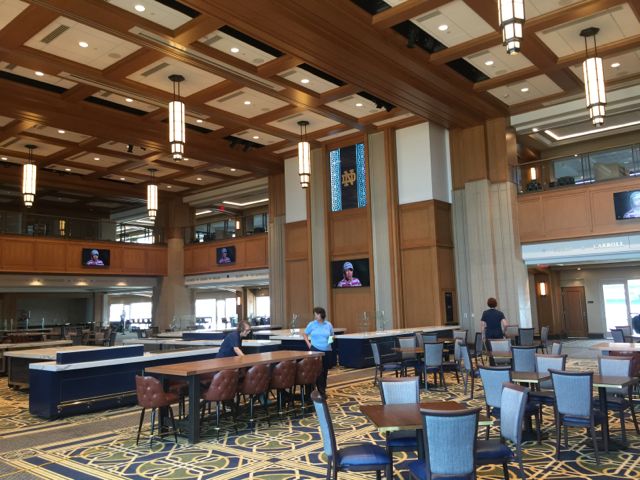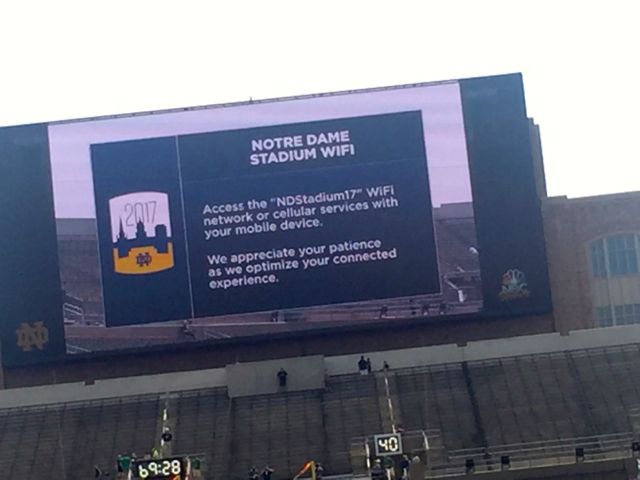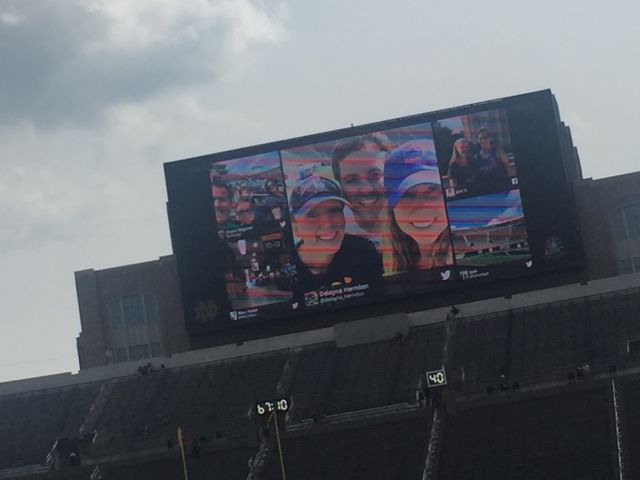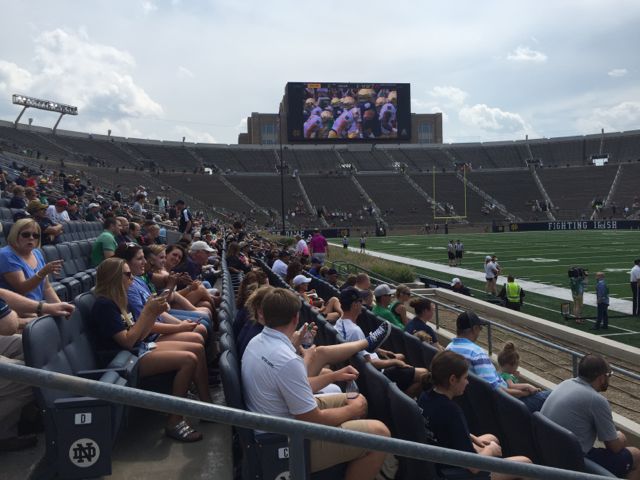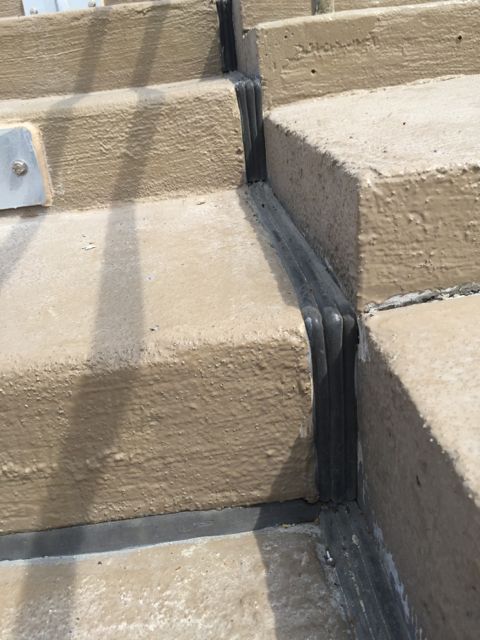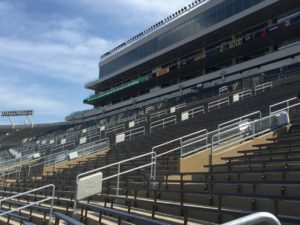
A good look at the railing AP enclosures in the east stands of Notre Dame Stadium. Credit: Paul Kapustka, MSR
The new network, part of the Campus Crossing remodel of the classic on-campus venue, has been humming all season, starting with a 6.2 TB night on Sept. 9, when the Fighting Irish hosted Georgia. With historical rival USC in the house, however, Notre Dame fans set new records across the board for Wi-Fi use, including most unique clients (27,399), most concurrently connected clients (21,008) and most peak throughput, 5 Gbps. It probably didn’t hurt that Notre Dame crushed the Trojans that day by a 49-14 score, which probably made it into many selfies with the scoreboard in the background.
The 7.0 TB mark puts the Notre Dame-USC game into the No. 5 spot on our unofficial all-time list of single-day Wi-Fi data usage totals, behind just Super Bowls and some recent big-game NFL events. It also gives Notre Dame the No. 1 and No. 2 marks when it comes to collegiate events, at least for now (we’ll be on the lookout for the College Football Playoff championship game this season at Atlanta’s new Mercedes-Benz Stadium).
NOTRE DAME 2017 SEASON WI-FI NETWORK STATS
THE LATEST TOP 10 FOR WI-FI
1. Super Bowl 51, NRG Stadium, Houston, Feb. 5, 2017: Wi-Fi: 11.8 TB
2. Super Bowl 50, Levi’s Stadium, Santa Clara, Calif., Feb. 7, 2016: Wi-Fi: 10.1 TB
3. Kansas City Chiefs vs. New England Patriots, Gillette Stadium, Foxborough, Mass., Sept. 7, 2017: Wi-Fi: 8.08 TB
4. Green Bay Packers vs. Dallas Cowboys, Divisional Playoffs, AT&T Stadium, Arlington, Texas, Jan. 15, 2017: Wi-Fi: 7.25 TB
5. Southern California vs. Notre Dame, Notre Dame Stadium, South Bend, Ind., Oct. 21, 2017: 7.0 TB
6. WrestleMania 32, AT&T Stadium, Arlington, Texas, April 3, 2016: Wi-Fi: 6.77 TB
7. Super Bowl 49, University of Phoenix Stadium, Glendale, Ariz., Feb. 1, 2015: Wi-Fi: 6.23 TB
8. Georgia vs. Notre Dame, Notre Dame Stadium, South Bend, Ind., Sept. 9, 2017: Wi-Fi: 6.2 TB
9. Alabama vs. Texas A&M, Kyle Field, College Station, Texas, Oct. 17, 2015: Wi-Fi: 5.7 TB
10. Pittsburgh Steelers vs. New England Patriots, AFC Championship Game, Gillette Stadium, Foxborough, Mass., Jan. 22, 2017: Wi-Fi: 5.11 TB

